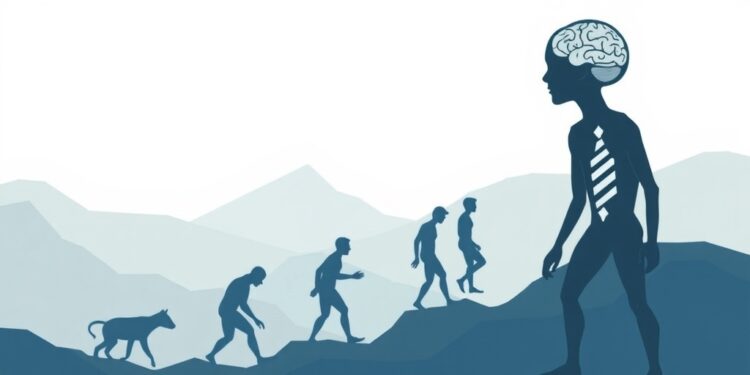In a pioneering study that deepens our understanding of brain evolution, a team of researchers from Belgium has employed deep learning to explore how genetic switches regulate gene activity across various brain cell types in humans, mice, and chickens. This groundbreaking work, published in the esteemed journal Science, illuminates the intricate regulatory mechanisms that shape the diverse architectures of neural cells, offering insights into both evolutionary biology and potential therapies for neurological disorders.
At the core of this research lies the concept of genetic regulation, which governs the expression of genes within cells. Despite all cell types sharing the same DNA blueprint, their functional differentiation relies on a sophisticated regulatory code. This code comprises short DNA sequences that act as switches, turning specific genes on or off, thereby guiding each cell’s unique role in the nervous system. The team, led by Professor Stein Aerts at VIB.AI and the VIB-KU Leuven Center for Brain & Disease Research, engaged in a comprehensive investigation of this regulatory code to better understand the evolutionary pressures that have shaped brain cell types across divergent species.
The research team trains advanced deep learning models on extensive brain data, allowing them to identify the regulatory codes associated with various cell types. This methodological approach leverages the capabilities of artificial intelligence to process vast amounts of information, enabling the researchers to uncover patterns that would be impossible to discern through conventional analytical methods. As a result, they are able to generate a detailed transcriptomic atlas that establishes the foundations necessary for comparing brain cell types across species.
A significant finding of this study is the discovery of both highly conserved and divergent regulatory codes among different species. The research indicates that while certain cell types retain similar regulatory mechanisms despite evolutionary distance—particularly between birds and mammals—others have developed unique features. For instance, the comparative analysis revealed intriguing similarities between specific types of bird neurons and deep-layer neurons found in the mammalian neocortex, suggesting a complex interplay of evolutionary factors influencing brain architecture.
The implications of these findings extend beyond evolutionary curiosity; they also pave new pathways for understanding disease mechanisms. The regulatory codes that dictate cell type identities are critical for understanding how disruptions in these codes could lead to pathological states. The researchers previously established analogous regulatory patterns in melanoma, a type of skin cancer, between mammals and zebrafish, signifying that the insights gained from this study may have broad applications in developmental and cancer biology as well.
By focusing on the regulatory code, scientists can identify functional similarities that persist across species evolution even when the genetic sequences may differ significantly. This capability may lead to novel strategies aimed at investigating genetic variants associated with various neurological conditions, such as cognitive disorders and mental illnesses. The research underscores the relevance of deep learning as a transformative tool in synthetic biology, offering a degree of analytical precision that enhances our understanding of gene regulation and its consequences.
The team’s ongoing work involves applying these models to a broader array of animal brain types, contributing to a global repository of knowledge regarding the evolution of brain structure and function. Through collaborations with zoological and wildlife organizations, researchers are casting a wider net in their evolutionary modeling endeavors, which now encompass diverse species, from fish to mammals. This expanded focus will aid in understanding how these myriad cell types evolved and how they may inform our knowledge of human health and disease.
Furthermore, the research opens up new avenues for investigating neurodegenerative diseases such as Parkinson’s disease, with AI-driven models playing a critical role in elucidating the genetic underpinnings that may predispose certain individuals to such conditions. By pinpointing regulatory differences linked to these diseases, researchers can potentially uncover biomarkers that aid in early diagnosis, prevention strategies, and targeted therapies.
In conclusion, this innovative study characterizing the regulatory codes of brain cell types across species represents a significant leap forward in neuroscience and evolutionary biology. The insights garnered from the research not only enhance our understanding of brain evolution but also underscore the intricate connection between gene regulation and the manifestation of complex diseases. As artificial intelligence continues to evolve, its integration into biological research will undoubtedly yield further breakthroughs that shape our understanding of life, biology, and health.
In a broader spiritual sense, these discoveries remind us of the connectivity of life and the shared evolutionary journey of all species. By unraveling the genetic narratives that define us, researchers like Professor Aerts and his team contribute to a deeper appreciation of the living tapestry of life on Earth.
This research illuminates the enduring questions of where we come from and how the branches of the evolutionary tree have shaped not just our brains, but our very identities.
Subject of Research: Cells
Article Title: Enhancer-driven cell type comparison reveals similarities between the mammalian and bird pallium
News Publication Date: 14-Feb-2025
Web References:
References:
Image Credits:
Keywords: Brain evolution, Cellular regulation, Gene regulation, Evolutionary developmental biology, Neural modeling, Evolutionary genetics, Deep learning.
Tags: brain evolution researchcomparative brain studies in humans and animalsdeep learning in biologyevolutionary pressures on brain architecturegene expression in different speciesgenetic regulation in neural cellsinsights from evolutionary biologyneural cell differentiationneuroscience and genetic switchesregulatory mechanisms in brain developmenttherapies for neurological disordersVIB-KU Leuven brain research





